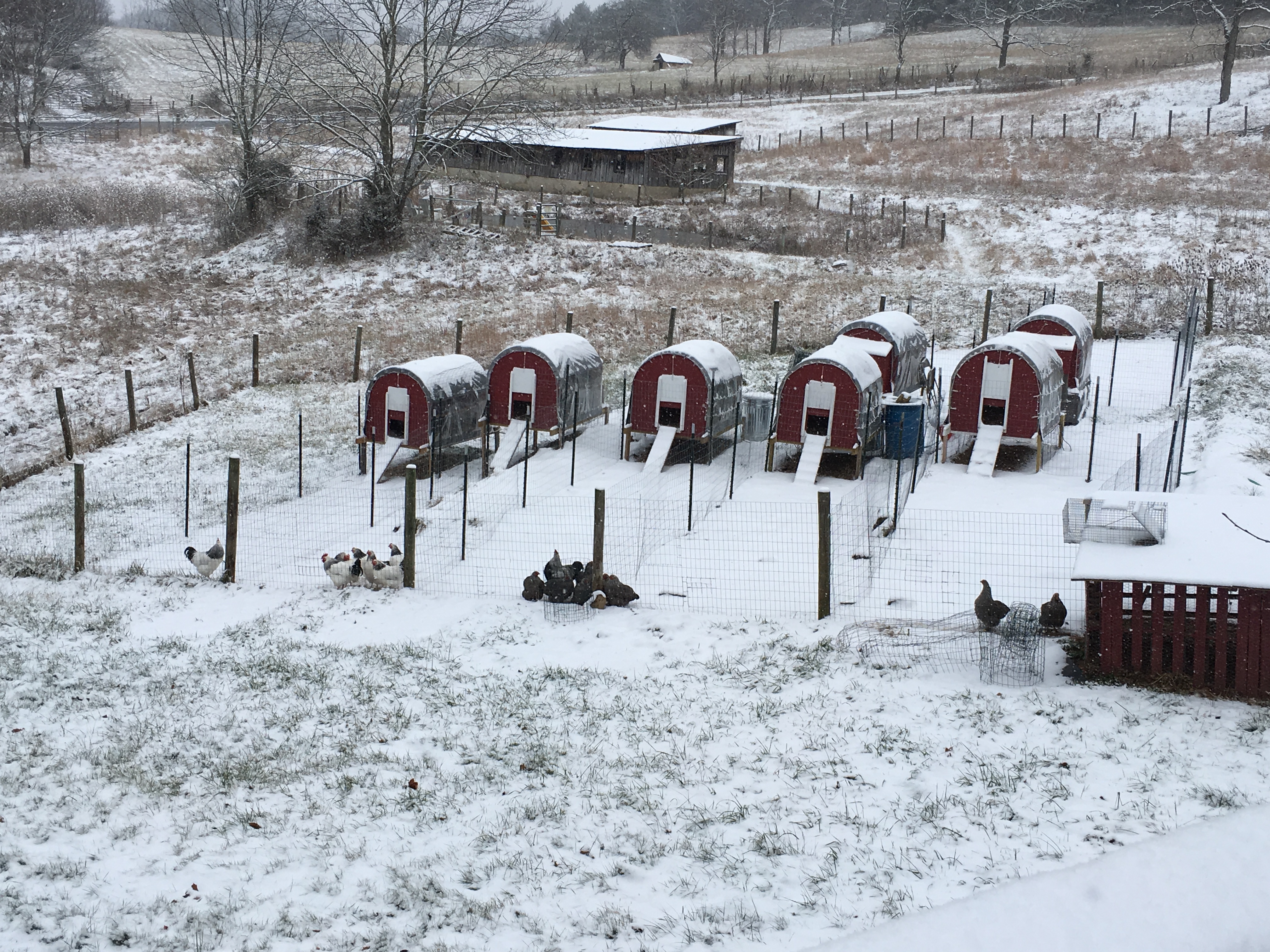

As the fall weather has become colder, we have been modifying our Family Coops to make sure that our birds stay warm in the winter.
Our first step was to open up the tarps that protect their interiors and quickly staple in some landscaping cloth to cover the wire floor. Over this we spread about 3” of pine shavings.
Later, we mulched and added fall leaves to this bedding. (You can read details about this nifty trick in this post.) About every month, we add bedding to the coops. Up until Christmas, they have remained clean and sweet smelling!

The birds were doing fine at night while temperatures remained in the 20’s, but as they began to regularly dip into the teens and below, we added simple covers to the feeding stations at the back of the coop, and a skirt to some that are most often hit by strong winds. These covers prevent cold air from blowing into the coops.
The flaps over the feeding station, in particuar, also seem to keep their water from freezing quite so fast, and keep hungry wild birds — around here, jays and crows — out of the feed, as these became more of a pest as winter came on.

As the days got darker, we also added light to the coops in order to encourage young pullets to lay reliably. Since it was the season, and we had extras, we ended up using Christmas lights. A $10 set (purchased at our local Family Dollar store) was 14’ of lighted length, and proved to be the perfect size to festoon the clear panels on our coops. We linked them with outdoor extension cords, and have them all on one timer. They light up in the early AM and evening so that the birds have 15 hours of light per day.
Then we had our first snowfall: about 3”. The birds did fine, though they did tend to huddle either inside their coops or at the very end of the runs. 🤔 Most of the day, this scene has remained fairly static.

As the winter progressed, the only trouble we had was with the bedding. On those inevitable long weeks where birds spent much more time in their coops because of freezing or blowing or snowing weather, the bedding did cake up because the landscape cloth made it very hard to stir it properly (as you should always do with deep litter).
We ended up cutting three 4’ x 2’ pieces of 1/2” plywood and lining the bottom of the coops on a warm day in January. We pulled out the caked bedding and landscape cloth, put down compressed wood pellets (like they use in pellet stoves) and shavings on top of the new wood floor panels.

Since then, adding shavings and stirring the bedding is much easier, and we’ll be able to remove the boards come late spring, store them, and reuse them winter after winter.
Our final improvement came in late March, and we plan to add this one to our published plans. We added door flaps in place of the hardware cloth ones. These are hinged to the bottoms of the nesting boxes, and hooked on the bottom so that they stay closed, as well as hooking to an eye-screw to stay open for feeding/watering.
The reason we decided to make this permanent amendment to the design is that there’s always a concern with rodents and with wild birds getting at the chicken feed (the latter spread avian diseases). Furthermore, for the coops where water stations face east, we fought algae in our bowls a lot. This modification helps fight algae and wild birds, while adding yet another layer of protection for the birds from cold or predators. And it only took about an hour to add one to each of our coops!
